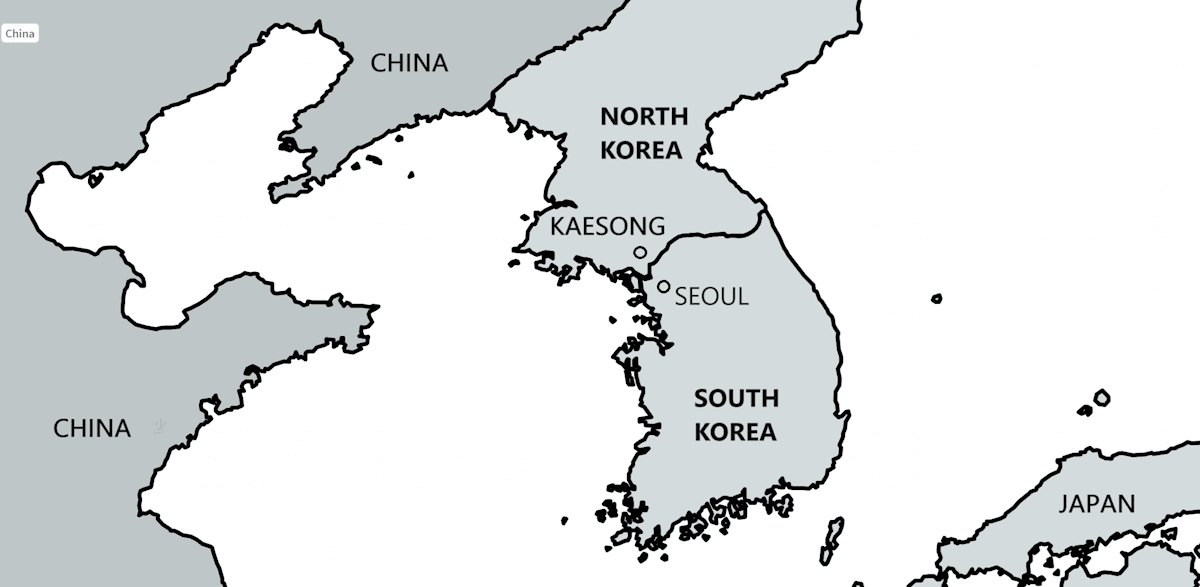The Kaesŏng Industrial Region (KIR) or Kaesŏng Industrial Zone (KIZ) is a special administrative industrial region of North Korea (DPRK). It was formed in 2002 from part of the Kaesŏng Directly-Governed City. On 10 February 2016, it was temporarily closed by the South Korean government and all staff recalled by the Park Geun-hye administration,[1] although the former President of South Korea, Moon Jae-in, signalled his desire to "reopen and expand" the region in 2017. This never happened, and the complex has now been completely abandoned, though DPRK officials regularly announce it will be rejuvenated.
The Worker-Peasant Red Guards (WPRG; Korean: 로농적위군), also translated as Workers and Peasants' Red Militia (WPRM),[2] is a paramilitary force in North Korea. It is the largest civil defense force in North Korea. It is not only under State Affairs Commission (until 2016 National Defence Commission) and Ministry of Defence control, but is also attached to the Workers' Party of Korea under its Military Leadership Department. It is thus responsible to the Supreme Leader in his capacity as Supreme Commander of the Armed Forces.
TECH featured in this chapter:
Uncrewed Ground Vehicles: By the 2030s, the U.S. Army plans to build and deploy three types of robotic combat vehicles. Piloted by soldiers from miles away, the robo-vehicles will either fight solo or alongside crewed vehicles. The director of the Army's next-generation combat vehicle program likened the robotic vehicles to Gen. George Patton's "Ghost Army" of World War II. https://www.popularmechanics.com/military/weapons/a37202757/army-robotic-combat-vehicles-ghost-army/
Legged Squad Support System (LS3) was a DARPA project for a legged robot which could function autonomously as a packhorse for a squad of soldiers or marines. Like BigDog, its quadruped predecessor, the LS3 was ruggedized for military use, with the ability to operate in hot, cold, wet, and dirty environments.[1][2] Similar systems are now in use in Ukraine: https://www.forbes.com/sites/davidhambling/2024/08/16/what-we-know-about-ukraines-army-of-robot-dogs/
Slaughterbot (SAAGA: Semi-Autonomous Air-Ground Assault system): Slaughterbots, also called “autonomous weapons systems” or “killer robots”, are weapons systems that use artificial intelligence (AI) to identify, select, and kill human targets without human intervention. Whereas in the case of unmanned military drones the decision to take a life is made remotely by a human operator, with autonomous weapons the decision is made by algorithms alone. An autonomous weapon system is pre-programmed to kill a specific “target profile.” The weapon is then deployed into an environment where its AI searches for that “target profile” using sensor data, such as facial recognition. When the weapon encounters someone or something the algorithm perceives to match its target profile, it fires and kills. In FULCRUM the US SAAGA has a 'human in the loop' who has to approve targeting. https://autonomousweapons.org/
The Chengdu J-20 (Chinese: 歼-20; pinyin: Jiān-Èrlíng), also known as Mighty Dragon (Chinese: 威龙; pinyin: Wēilóng,[8][9][10] NATO reporting name: Fagin),[11] is a twinjet all-weather stealth[12] fifth-generation fighter aircraft developed by China's Chengdu Aerospace Corporation for the People's Liberation Army Air Force (PLAAF).[5] The J-20 is designed as an air superiority fighter with precision strike capability.[13] The aircraft has three variants: the initial production model J-20A, the thrust-vectoring J-20B, and twin-seat aircraft teaming capable J-20S. The Chinese military is developing advanced autonomous capabilities for its combat aircraft. In March 2021, it was reported that a J-16 variant with the backseat co-pilot replaced by an artificial intelligence algorithm called "intelligence victory" (Chinese: 智胜; pinyin: Zhì shèng)
